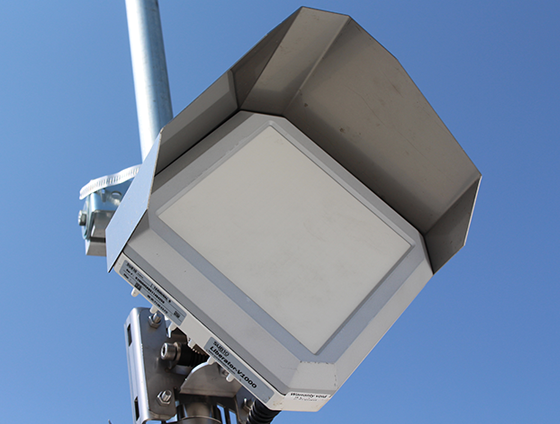Liberator V1000 Dual Port

Form & Function Combined in Carrier Grade, Feature-packed Device
The Liberator V1000 Dual Port is an easy to deploy, cost-effective, point-to-point wireless Ethernet bridge operating in the 60 GHz millimeter wave V band. A secondary data port with both GigE copper & SFP sockets, allows flexibility for either Cat5 or fiber connections interchangeably. This allows both copper and fiber tributaries to be aggregated over the radio link, and is particularly useful for daisy-chaining in small cell backhaul applications. Extra frequency channels are available for improved interference protection, as well as a robust antenna radome for withstanding severe weather conditions.
Combining carrier class performance with advanced features such as adaptive modulation, multi-channel operation, low latency, software-activated flexible link throughput and AES 256 bit encryption, the V1000 Dual Port supports a variety of short haul connectivity and backhaul applications.
- Up to 1 Gbit/s full duplex capacity with FDD
- Up to 800 meter range
- Primary port GigE/PoE, secondary data port GigE copper/SFP
- Easy alignment with optical scope
- Minimal form factor & integrated antenna (18 x 18 cm)
- Robust aluminum housing withstands severe weather conditions
- 256 bit AES encryption option available for added security
- SyncE and lEEE 1588 compliant synchronization

Easy, Discrete Installation
Liberator V 1000 links are easy to deploy and manage while providing high throughput and reliability. Power and data is supplied via small, Power over Ethernet power injectors. Link alignment is carried out via a visual alignment tool or standard multimeter, with link performance monitored and optimized with the GUI-based management system.
With a minimal form factor, the V1000 all-outdoor platform is optimized for invisible street level deployments in challenging high-density networks, and multiple units can be co-located on a single pole when required. The antenna beam-width is sufficiently wide to allow for the pole sway, twist and tilt encountered with small cell backhaul links, and the unit is contained in a lightweight robust aluminum housing to withstand even harsh weather conditions.
The compact, integrated device eases installation with more options for discrete placements and fewer site limitations, and license-free operation eliminates the need for frequency coordination, simplifying planning.

V Band Advantages
Frequency Re-use & Interference Free Operation
The V band, between 57 and 64 GHz, available on a license-exempt basis, enables backhaul and connectivity short haul links to be rapidly and cost-effectively deployed. ln this band, radios operate without interference issues, even when deployed in close proximity in highly dense networks, due to the oxygen absorption characteristics of the band. Large networks can be deployed and operate at extremely high densities with tens of links on a single rooftop or street. The V1000 high gain antenna with low side lobes, combined with the option to use multiple channels, ensures excellent interference immunity, even for collocated radios on a single pole. Ideal for operation in interference prone locales, the V1000 is well suited for WiFi connectivity replacement solutions required where interference has rendered WiFi ineffective.
The short-range nature of V band provides huge advantages in frequency re-use. The V band is positioned on the peak of oxygen absorption, which limits link lengths to less than 1km. This makes V band devices ideal for street level deployments where the same channel can be used over and over again in a small geographical area. With up to 7 GHz of available spectrum on unlicensed basis, V band is well suited to the greater spectrum bandwidth requirements of higher capacity backhaul. This frees precious licensed spectrum to carry monetized radio access network (RAN) traffic.

Highest Capacity at Lowest Cost
The combined benefits of the power and simplicity of the Liberator V1000 deliver compelling economic advantages for wireless high capacity connectivity in the “last mile”, the most expensive portion of the fiber world where millimeter wave technologies are ideal. Faster time to implement vs. fiber, low complexity quick installation, flexibility in device location, no spectrum license costs, and low maintenance operation, make the V1000 the lowest cost solution available for shorthaul Gigabit capacity connectivity.
